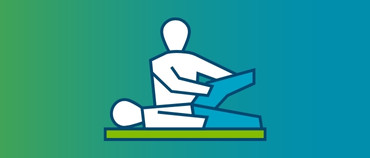Technology is playing an increasingly important role in many healthcare-focused county departments, from public health to behavioral health and more. Many county authorities have adopted an electronic health record (EHR) system, using it not only as a patient care resource, but also as a data repository linked to population health management. As many counties are leveraging technology for better, simpler and more efficient care, more are now realizing that EHRs and related technology can benefit their workforce at all levels and functions –– saving time, preventing burnout and increasing job satisfaction.
Historically, EHRs weren’t designed to improve care. Instead, much of their focus was on solving non-clinical problems, like how to bill for services, ensure services met regulatory requirements, or provide management reports. But more recent advances, including a major focus on clinical and operational workflow (or “knowledge flow”), artificial intelligence (AI), natural language processing (NLP), and robotic process automation (RPA), are reshaping how users interact with these systems to provide better care with ease and efficiency.
Every clinician has to write notes — progress notes, case notes — and they often do that hours or sometimes days after the service is delivered. This means they face a burden of time, often in what should be their off-hours, sorting through dropdown boxes and problem lists so that they can recall the patient and type in their notes. But the power of natural language processing technology, together with AI, is now simplifying the process by bringing common mobile technology—a cell phone—into play. Using a mobile app called the Bells Digital Assistant, linked to the EHR, a provider can talk to the phone and let it jot things down during a patient visit. The technology automatically “writes out” notes, validates entries against a behavioral health dictionary, and provides contextual recommendations to enable clinical decision support directly to the provider Bells also links those remarks to items on the individual’s problem list, capturing a provider’s real-time observations as the basis for a faster, higher-quality patient note.
With Bells, you just select the client you’re working with on the cell phone and begin. The app is much more sophisticated and nuanced than plain voice-to-text, because it is contextually aware. It knows the patient, the problem list, the names and roles of people on the care team, and the services the team can provide. With Bells, note-taking time can be cut in half. Providers can “tag” members of the team, take advantage of standardized text descriptions to reduce compliance or reimbursement errors, and promote a truly multi-disciplinary approach to care.
Shaping technology to work better for clinical staff goes well beyond the note-taking process, however. Within the EHR, special views provide automated task lists, based in part on the team “tags” I mentioned. These improve efficiencies by placing all required care activities into a single view for a single nurse, without the need to search the EHR. Or, if there’s a virtual care visit, the telehealth video session can be embedded within the EHR view, giving the clinician direct access to the entire client chart without breaking visual contact with the client.
The benefits of advancing EHR technology –– saving time, providing better care and improving morale and job satisfaction –– aren’t limited to clinicians alone. Users are benefitting across all segments of behavioral health and I/DD care. Before the pandemic, the stress was on psychiatric nurses and child psychologists. Now, we’re hearing that organizations can’t recruit enough DSPs and other staff as well.
Technology solutions designed with these direct care professionals in mind pose different, but no less important challenges. The goal here is to make the technology as simple as possible to use, and to make it work on whatever device is available. (Organizations typically expect that direct-care workers will use what they have, which is typically an iOS or Android smartphone.) Since turnover is frequent, we’ve built an app that requires virtually no training to use. It’s got to be intuitive so you can just download it and use it.
That’s the goal with all of our solutions in the direct care space. So, for example, when direct care workers visit a home to deliver services, electronic visit verification (EVV), is required. It used to be that you had to call in from the individual’s home, using a landline phone. Instead, phone-based apps help to improve the process, providing direct care workers not only with GPS routing information to efficiently make multiple calls and track mileage, but with reporting location data for visit verification. These display targeted workflows specific to each patient for service delivery and billing.
For organizations managing service delivery across the community, apps like these, when combined with personnel, service, and consumer information stored in the EHR, add up to far faster and more efficient delivery for everything from ADL services, to credentialed autism services, to skilled crisis response. Overall, it’s a simplified, more efficient, time-saving process for the care providers serving them.
When calls come in, the EHR system automatically pulls up a list of qualified personnel, including their expertise and licensure. Using a mapping feature, a manager can then display available care providers, visit schedules, and routes of travel before selecting the provider to dispatch. Once the visit is assigned, the routing system also delivers updated information, workflows and the most efficient route to the assigned provider.
With so many services being delivered in the community, it’s our job to ensure that the right care providers get to the right place at the right time. We’ve learned a lot from logistics companies, and we’ve used it to create algorithms to connect people and skills––to route them efficiently, to enable rapid communication and to help them get the job done.
The benefits enjoyed by caregivers have follow-on effects that improve operational and financial results, too.
- The Bells Document Assistant has helped reduce clinical documentation time by up to 50 percent, which, operationally, speeds up the completion of billing information, increases claims per provider and reduces days in accounts receivable.
- Integrating telehealth optimizes workflow for telehealth visits, so that you’re collecting the right information/releases and assessments beforehand, then providing the needed follow-up afterward. Setting a telehealth workflow also creates an alternate front door for care, a service delivery option that more and more people prefer.
- Routing and logistics apps have helped some providers cut travel times by up to 70 percent.
- Targeted workflow/knowledge flow programs not only ensure that care providers in the field deliver specific, personalized care; they also provide operations personnel with optimized language and clinical information for faster, more accurate billings.
These are just a few examples. But the net result is that a comprehensive EHR platform encompassing a variety of fully integrated solutions–– for note taking, telehealth, workflows/knowledge flows, routing and more –– can help to make challenging clinical and direct care jobs easier. Netsmart believes in improving productivity and satisfaction for all clinicians and care delivery staff, as well the related clinical, financial and operational workforces. While it is possible for a county CIO to assemble a similar system using apps from different vendors around a central EHR, such an approach requires multiple contracts and a lot of custom integration work. So, I suggest that a single, integrated EHR platform might be more satisfying not only to clinicians, direct care staff, and operations personnel, but also to the CIO and executive team.
This article was co-authored by NACBHDD and originally featured in their "Under the Microscope" newsletter as a partner spotlight.
About the Author
David Strocchia, Senior Vice President / Managing Director, Human Services
David Strocchia leads the human services organization for Netsmart, working closely with the clinical, development and product teams, allowing clients across the human services community to thrive in emerging models of care including value-based reimbursement. He's held a variety of roles with Netsmart, including consulting, client alignment and product management.









